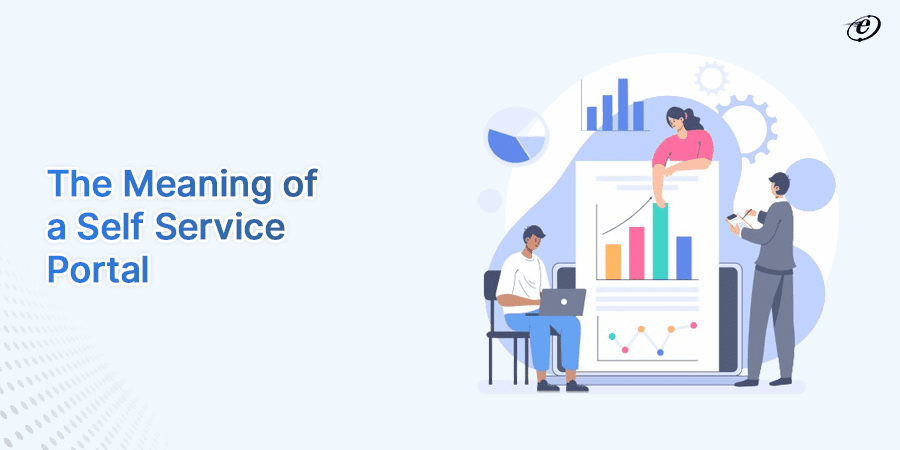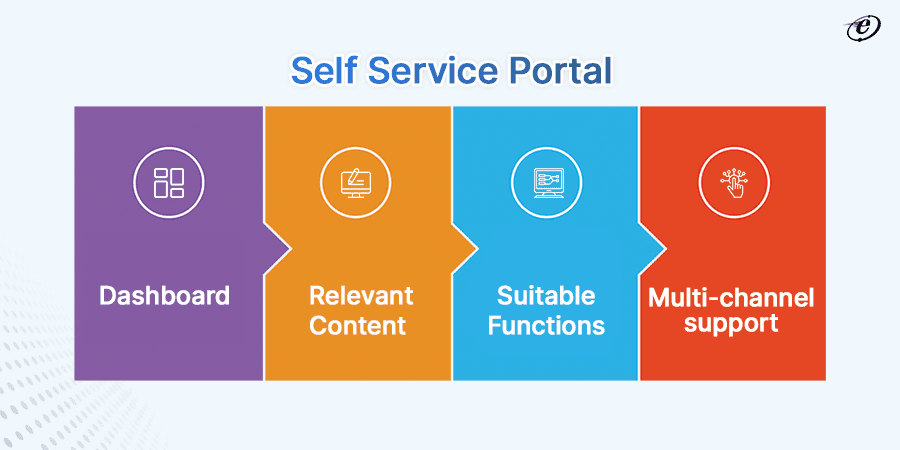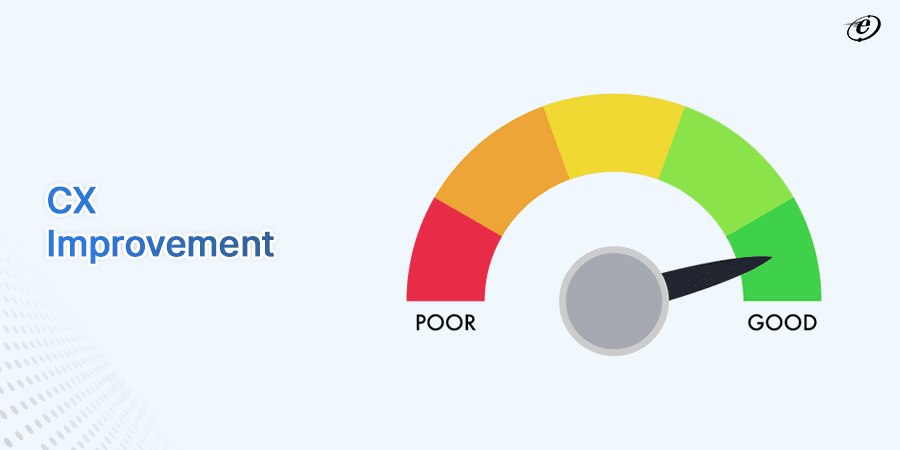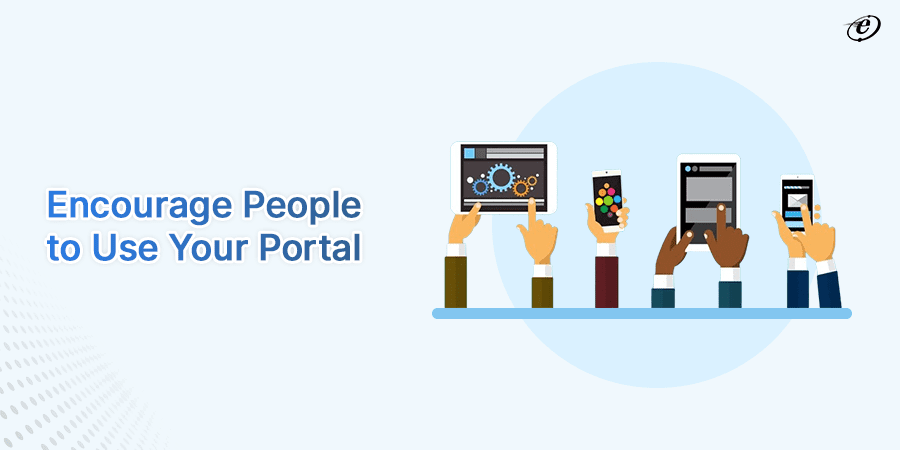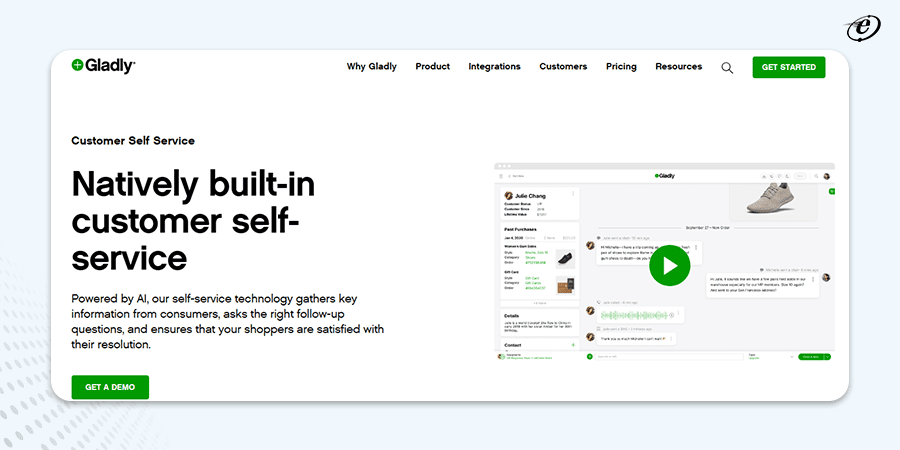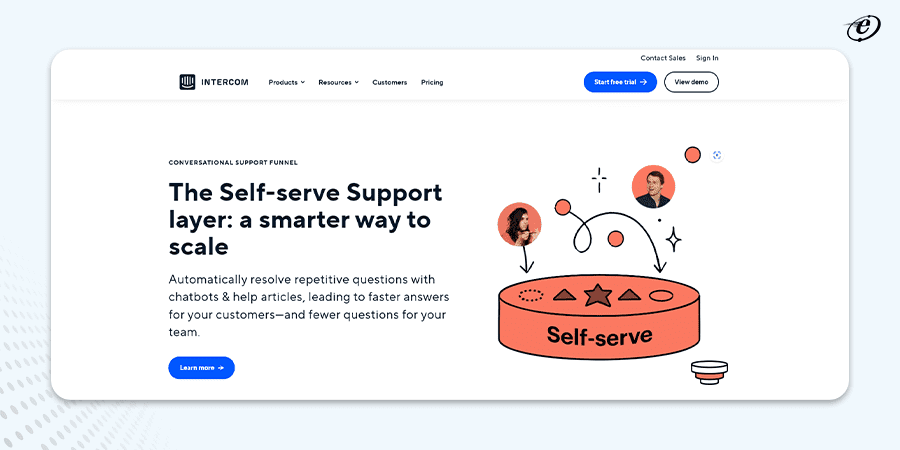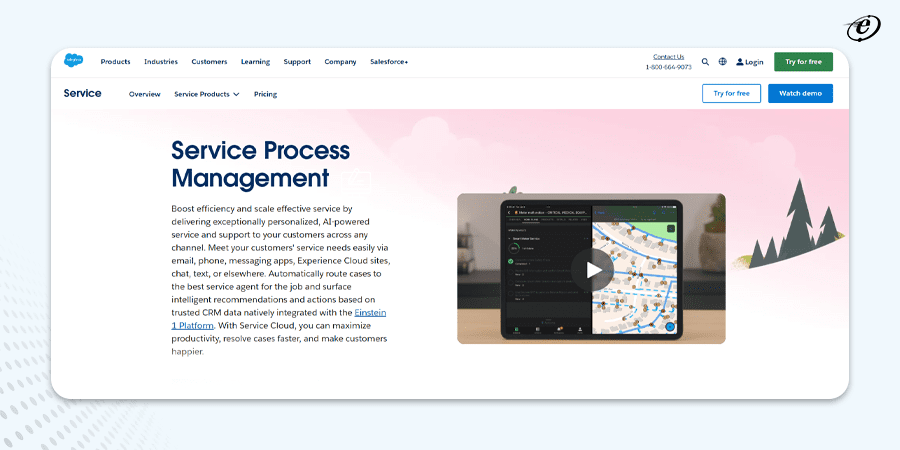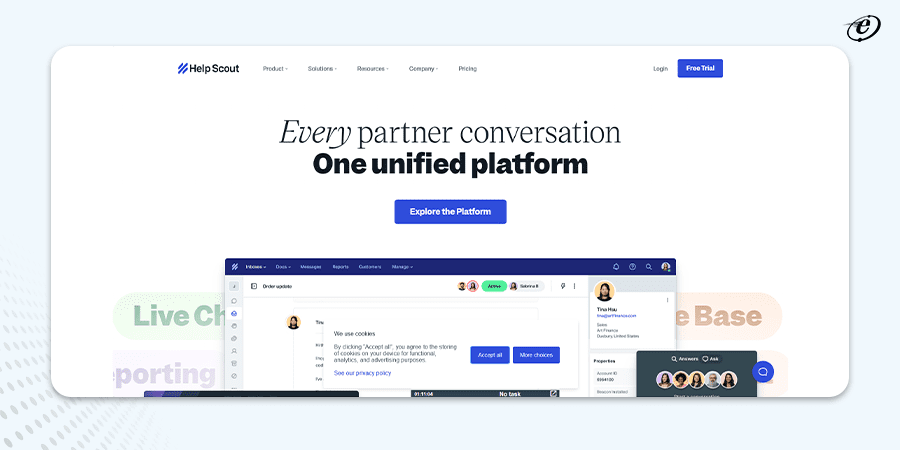‘If you want good service, serve yourself.’ In an era where you focus highly on customer satisfaction, this quote affirms the presence of self-reliant consumers. In fact, digital platforms like a self service portal are perfect products to serve such a target audience.
Get this – a statisa.com survey reveals that 88% of global customers expect a brand to have an online self-service portal. Quite a significant number, right?
When your target audience is tech savvy, they try to find solutions themselves. That’s when a self-service portal becomes one of your strongest digital assets.
In simple terms, self service portals are online platforms that enable your target audience to find relevant information, solve their queries, and troubleshoot common problems. As a business, you would definitely benefit by understanding more aspects than the simple definition.
So, scroll ahead to know all about a self service portal, its benefits, development steps, and some real-life examples.
The ABCs of a Self Service Portal
Self service is an evergreen concept. Simply put, this practice implies individuals serving themselves rather than asking for external assistance.
A good example is that of your favorite supermarket. Instead of asking a shop representative for small information, you browse the shopping items yourself. Similarly, in most gas stations, drivers pump fuel and pay the respective charges at the kiosk.
So, you can break this concept into two parts:
- Self service: The act of completing tasks or finding solutions on your own
- Portal: An online platform in which you can create an account and benefit from the available services
A self service portal acts similar to a digital help desk. It is a website or an app where you maneuver your way through the organization’s offerings.
Here’s the simple definition:
A self-service portal is a digital platform where you can find pertinent information, solve problems, and complete the required tasks on your own.
Key Features of Self Service Portals
What does a standard self service portal have? Well, the features or components of such a platform are variable. Still, you can expect the following elements in a well-developed application:
- An intuitive dashboard: The main user interface (UI) of a self-service portal is engaging, easy to use, and has clear menus and options. Also, the design is responsive (adapts to both desktops and smartphones)
- Relevant and informative content: A good self service portal has helpful articles, blogs, and video tutorials that cover the main topics
- Relevant functionalities: Users like you can manage your account, complete relevant tasks, track orders, cancel subscriptions, submit requests, and perform other activities fluently
- Multi-channel support: One of the most valuable features of a good self service portal is the ability to access it from different platforms like Windows, Android, MacOS, or iOS
Most reputed companies hire dedicated developers to build a self-service portal that covers all these features. So, even you can follow a similar strategy and partner with a trustworthy IT vendor.
Benefits of Using a Self Service Portal
Now, you know what self service portals offer. But, as a business, it is beneficial to address one primary question – ‘will this platform provide several advantages?’
In a word, ‘yes.’ Read this section to comprehend four significant benefits of developing a self service portal.
Enhanced Customer/Employee Experience
Self service portals are not just for customers. You can also develop them for your employees. They save time for your target audience by providing readily available frequently asked questions.
In addition, customers or employees can handle their needs without the intervention of support personnel. These aspects reduce frustration, improve productivity, and empower your target audience.
Overall, a self-service portal enhances your user experience drastically.
Rise in Operational Efficiency
There are several ways to improve your operational efficiency by using a self service portal. Here are some pointers to consider:
- These portals reduce the workload of your support teams
- They help eliminate the need for manual intervention by automating tasks like resetting passwords or tracking order status
- A comprehensive self-service portal offers easy access to consistent and up-to-date information
- You also minimize the need for extensive training sessions as these portals cover the most relevant information
- Analytics and reporting tools help companies like yours create the most relevant content
Overall, these facets explain how self service portals contribute to a rise in the operational efficiency.
Increase in Brand Reputation
How does a self service portal boost your brand’s identity?
Well, it is a platform that focuses on customer empowerment. When your target audience uses this portal, they get a message that you value their time.
In addition, these portals provide 24/7 access to relevant information and resources. So, you exhibit commitment to convenience. All these factors augment your company’s reputation profoundly.
Improved Chances of Customer Retention
This benefit is a no-brainer, right?
When you empower your customers/employees with a fully functioning self-service portal, there is a direct positive impact on retention.
Who wants to leave a company offering seamless digital assistance and choose a competitor without such a facility? Surely, no one. So, ensure that you stay ahead of the competitive curve and increase the probability of retaining your valuable customers.
How to Build a User-friendly Self Service Portal?
Let us move one step ahead. You understand the concept of a self-service portal. You are also aware of these digital platforms’ key features and benefits.
What’s next?
Now, you should be conversant with the fundamental steps for building robust self service portals. In this section, we will explain the three major steps that skilled developers follow to build an all-inclusive self service portal.
Step #1: Identify User Requirements
To build a successful self service portal, you need to know the needs of your target audience. You can follow these points to develop a solid document:
- Define user groups: Are your users new or experienced? Does the self-service portal cater to your employees? Do you also want the portal to be accessible to external users?
- Collect data in depth: Conduct interviews, send questionnaires, analyze raised tickets, or evaluate search queries to understand the pain points
- Analyze and prioritize: Gather the insights and finalize the most relevant aspects. Create a final document laying out the prioritized points
Once you identify all these parameters, deciding the content, features, and other technical components of self service portals becomes easier.
Step #2: Develop the Essential Features
Your self-service portal can have endless features. However, an overloaded platform will not be necessary in every case. So, you should focus on building the elements relevant to your business and target audience.
Use the following table as a handy reference.
| Feature | Elements |
| Knowledge Base | Categories – Services, products, FAQs Multimedia elements Articles, blogs, or news |
| Search functionality | Ergonomic search bar Seamless search options Suggested results using AI |
| User-centric portal interface | Clear labelling and menus Engaging design High accessibility |
| Secure login and personalization | Multi-factor authentication Security levels (if applicable) |
| Useful digital tools | Order status Request submission Reset password Improvement suggestions Live chat or chatbots |
You need dedicated developers who can use the best tech stack to build a robust self service portal. Also, ensure that your platform is scalable, customizable, and integrates with software like CRM or other third-party tools.
Step #3: Use Relevant and High-quality Content
Understand this – content is the heart and soul of your self-service portal.
So, in addition to hiring a talented Content Writer, you should also take care of the following aspects:
- Create content that aligns with your user needs
- Use various formats like text, videos, infographics, etc.
- Avoid fluff and unnecessary information
- Ensure proper structure of your content with headings, sub-headings, and bullet points
- Connect relevant blogs and articles by hyperlinking at proper places
- If your customers/employees are diverse, provide the option of translating the content into different languages
When you take care of this step, your self service portal will be ready for the final launch.
Tips to Promote and Maintain Your Self Service Portal
Promotion raises awareness about your self-service portal. Also, users can solve common issues themselves. This aspect reduces costs and enables your staff to focus on complex problems.
Here are two main segments of promotion and maintenance that you should consider.
Focus on User Adoption
For widespread user adoption, you can divide the promotional aspect into the following sections:
- Internal communication: Inform your employees about the existence of a new self service portal. Conduct relevant training sessions to explain the features and encourage them to use the portal
- External communication: Use your official website, social media channels, and emails to advertise your self-service portal. You can even offer small prizes for customers who create an account on your platform in the early stages
After the preliminary launch, you can monitor user behavior and work on the feedback to improve the portal’s quality. Do not forget to send personalized emails about any new updates or a word of appreciation for using your self service portal.
Update Vital Portal Aspects
Finally, you need to take care of your self-service portal’s technical side on a regular basis. Refer the table below to understand some crucial elements.
| Type of Update | Main Activities |
| Content | Focus your ‘most-used’ section Update the dynamic information monthly |
| Data | Analyze engagement and drop-off rate Rectify sections with low user engagement |
| User feedback | Use surveys, suggestion forms, or polls Create new sections as per the requirement |
Remember, ensuring timely updates helps maintain relevancy and offers valuable content to your target audience. So, always invest in maintaining your self service portal.
Examples of Some Top Self Service Portals
By now, you are familiar with all the basics of self service portals. You must be thinking – ‘are there any successful brands with such dedicated platforms?’
In a word, ‘yes.’ Explore this section for brief information on well-known and successful self-service portals.
1. Gladly
This name is prominent in the customer service platform market. Gladly helps B2C companies strengthen their customer conversations.
The key features of its self-service portal are:
- Sidekick widget
- AI-powered knowledge base
- Multi-language answers
- Personalized intelligent voice response
Overall, you can make the best use of Gladly if you have:
- Global reach
- Evolving needs
- A large customer base
- An e-commerce setup
- Complex products or services
So, you can explore this self service portal by visiting the official website.
2. Intercom
This famous software company has a customer self-service portal. Intercom can provide your business with improved customer experience, data analytics, communication channel integration, and more with its self-service portal.
Here are the key features that can intrigue you:
- Help center
- Resolution bot
- Feedback mechanism
- Messenger integration
All in all, you can generate high ROI from Intercom’s self service portal if you have:
- An active online community
- Multiple communication channels
- High priority on user feedback
- An urge to build customer relationships
- Focus on customer success
So, give this platform a try and let us know your experience by leaving your invaluable comments.
3. Salesforce Service Cloud
Another notable customer service software is a product of the well-known Salesforce Service Cloud. This self-service portal focuses on centralized management and has several handy features:
- Knowledge base
- Case management
- Multilingual support
- High level of customization
Now, if you are familiar the following aspects, this self-service portal can prove extremely useful:
- High-volume customer inquiries
- Utilize the Salesforce ecosystem
- Complex products and services
- Want advanced AI capabilities
So, ensure you understand your requirements before browsing such top-notch self service portals.
4. Help Scout
A unified platform from Help Scout is one of the most popular self service portals. The offering reduces support costs, provides data-driven insights, and has a good mobile-friendly design.
Here are the key features of this self-service portal:
- Contextual search
- Embeddable widget
- Integrated search bar
- Centralized knowledge base
Some business can benefit more by using Help Scout’s self service portal. Here are the conditions to consider:
- More focus on FAQs
- Strong online presence
- Emphasis on continuous improvement
- Mobile-centric customer base
These self service portals are popular choices in the online world. However, you can even develop a customized portal instead of paying a significant subscription fee for these available options.
What’s more?
A tailor-made self service portal is a one-time investment. Once it’s up and running, you only need to update the content and maintain the technical aspects. So, consider partnering with a dependable web portal development company to build a unique self-service portal.
Develop Your Self Service Portal Today!
With a high emphasis on customer experience, brands like yours need to adapt and implement proven tactics.
Customer self service portals are one such digital product that offers many advantages. With these platforms, you can enhance customer/employee experience, improve operational efficiency, boost brand reputation, and retain your existing audience.
Building a customized self-service portal includes three steps – identifying user requirements, developing necessary features, and using high-quality content. Ensure you assign these tasks to competent professionals.
If you want personalized service to develop a self service portal, connect with our team. We specialize in web portal development and can seamlessly cater to your distinct requirements. So, contact us and start empowering your customers through an intuitive web portal.
Frequently Asked Questions
1. What information can I find on a self-service portal?
You can find sections like ‘About Us,’ ‘FAQs,’ ‘Contact Details,’ ‘Order History,’ ‘Resources,’ and ‘Knowledge Base’ on a self service portal. Other popular segments include chatbots, community forums, polls, surveys, and more.
2. How do I reset my password or update my account information on a self sevice portal?
Generally, different portals have distinct ways of resetting your password and a/c information. You need to locate the option ‘password reset’ or ‘update profile’ for this purpose. If you want further assistance, contact the support staff immediately.
3. How do I search for specific information within a self service portal?
You can use the search bar, enter relevant keywords, browse categories (if available), or seek live support to get specific information on a self-service portal.
4. What are the key features a self-service portal should have to be effective?
An effective self service portal should have features like a knowledge base, search bar, downloadable or viewable resources, and a mobile-friendly design. Ensure you hire skilled developers to build such necessary features.
Excellence-driven professional with 15+ years of experience in increasing productivity, and revenue, while effectively managing products of all sizes. He has worked for international clients in the US, UK, and Singapore and local companies in various domains. With excellent attention to detail and a methodical approach to execution, he is an expert in bringing projects to a successful stage. He follows James Humes’s famous saying- “The art of communication is the language of leadership.”

